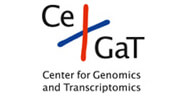LAB HOURS: MON - THU and SAT : 9:00 AM to 9:00 PM
FRI and SUN : 9:00 AM to 6:00 PM

Article - Systematic Review of Common NIPTs
FML at EOFF, 01/2017

Systematic Review of Common NIPTs
PD Dr. med. habil. Michaela Jaksch, Senior Consultant Laboratory, Medicine Medical Director
Freiburg Medical Laboratory ME LLC, Dubai, UAE
In 1997, Lo et al. discovered the presence of circulating cell free fetal DNA (cff DNA) in maternal plasma. This long expected option for non-invasive prenatal testing (NIPT) based on fetal DNA became reality and extensive research using different approaches resulted in the first commercially available NIPT in 2011.
The main advantage of NIPT compared to first trimester screening is the higher sensitivity and specificity for detecting the most common fetal aneuploidies with less false positive results. Around 10-15% of all birth defects can be attributed to chromosomal defects, out of which trisomy 21 is the most frequent (53%) followed by trisomy 18 (13%) and sex aneuploidies (13%) and more rarely trisomy 13 with 5% (Wellesley et al., 2012). These frequent defects are recognized by NIPT (see Table).
It is recommended that women at increased risk for fetal aneuploidy should undergo NIPT testing. This population has been defined as
Women 35 years or older
Ultrasound scan abnormalities indicating risk of aneuploidy
History of earlier trisomy 13 and 21
Increased risk in first trimester or second trimester screening
Known balanced translocation in the couple
Despite the fact that NIPT almost reach a diagnostic level, it is considered a screening test, as false positive results still exist (around 1 in 1000), however to a significant lower level when compared to first trimester screening, and especially to second trimester screening, which result in an overall false positive rate of around 5% (5:100). Diagnostic tests are amniocentesis and chorion villi sampling. They need to be performed when screening tests show abnormal results. These invasive procedures with a 0.5% - 1% risk of miscarriage could be drastically reduced since the introduction of NIPT.
Sequenom (USA) was the first NIPT provider, followed by Verinata, Ariosa and Natera (for review see Kotsopoulou et al.). Since 2014, many other providers followed and still follow. Most providers use the massive parallel sequencing approach on Illumina platforms. Their advantage is the low test failure rate, whereas the SNP target approach (Panorama) as well as the targeted sequencing – Digital Analysis of Selected Regions (DANSR) with the Harmony test show higher test failure rates (see table). Test failure rates occur mainly in cases with lower fetal fractions (too early blood collection, obesity) and due to higher cffDNA level requirements in targeted sequencing approaches.
Most providers investigate the cffDNA level, however those using the verifi technology discuss that they do not need this assessment due to their extremely high reads - thereby compensating low cffDNA levels. Praenatalis, also using the verifi method has implemented the cffDNA level estimation due to the direct test accreditation under the German Accreditation Body DAkkS (ISO 15189). One latest method uses the paired end sequencing approach, thereby achieving a better coverage than conventional sequencing (Yu et al., 2014).
In summary, every above mentioned NIPT technology shows strengths. Compared to first, quadruple, integrated and especially second trimester screening, NIPTs have revolutionized the field of prenatal screening. As a consequence, the number of invasive procedures such as amniocentesis or CVS could be significantly reduced. Latest publications showed extremely promising data, however results were partly generated by NIPT provider employees themselves (BGI, Illumina, Ariosa and others). This is inevitable, however a commercial impact in this extremely competitive field is most likely.
Those tests providing lowest failure rates, accepting low fetal fractions and showing highest sensitivity and specificity will succeed. This is relevant as the American College of Obstetricians and Gynecologists (ACOG) recommend invasive procedures when no result is reported, because a higher number of aneuploidies is observed in this group.
Genesis Serenity, based in Uk, using verifi technology claiming the lowest test failure rates (0.1%) and ability to proceed the test at fetal fractions as low as 1.4%.
Newer tests in development promise more cost-effective procedures. Vanadis Smart NIPT for example currently develops a new method, “not requiring complex DNA sequencing or microarray processes, but using enzymatic sample preparation to create and quantify fluorescent DNA objects” (see Vanadis website).
As for other perspectives of NIPT, testing monogenic disorders or frequent genetic disorders, the review of Benn (2014) provides a good overview of possibilities. So far, the more complex testing in NIPTs including microdeletions is not recommended, as the number of false positive results is too high. As a consequence, the positive predictive value of these results is still relatively low.
However, there is increasing evidence that future developments will fill this gap with more accurate results.
Overview table
|
Table
|
MaterniT21 SEQUENOM (5) USA |
Verifi VERINATA (5) ILLUMINA (6) USA |
Harmony ARIOSA (3,4) ROCHE (4) USA, UK, Germany a.o. |
Panorama NATERA (5) USA
|
PrenaTest LIFE-CODEXX (5) Germany a.o. |
Nifty BGI (2) China a.o.
|
Praenatalis ZHL (6) Germany 2015 |
Neobona LABCO SYNLAB (7) Spain |
|
Introduction |
2011 |
2012 |
2012 |
2013 |
2012 |
2013 |
2015 |
2015 |
|
Platform/ Method |
MPS/Illumina NGS
|
MPS/Illumina NGS |
DANSR (targeted sequencing) Array |
Targeted NGS-SNP based sequencing |
MPS/Illumina NGS |
MPS/Illumina NGS |
MPS/Illumina |
MPS/Illumina NGS bidirectional (paired-end) |
|
Test |
13,18,21,XY+, microdeletions |
13,18,21,XY+, |
13,18,21,XY+, |
13,18,21,XY+, Microdeletions, triploidies, a.o. |
13,18,21,XY+ |
13,18,21,XY+ |
13,18,21,XY+ |
13,18,21,XY+, microdeletions |
|
Software |
? |
SAFeR |
FORTE |
NATUS |
? |
? |
SAFeR |
Tscore |
|
cffDNA Measuring |
Yes/ 2% |
no |
yes |
yes |
yes |
yes |
yes |
yes |
|
PCR Amplification |
Library, untargeted |
Library, untargeted |
Targeted |
Targeted |
Library, untargeted |
Library, untargeted |
Library, untargeted |
Library, untargeted |
|
Diagnostic Test |
no |
no |
no |
no |
no |
no |
no |
no |
|
Validation Publications |
yes |
yes |
yes |
yes |
yes |
yes |
in print |
in print |
|
Certification |
yes |
yes |
yes |
yes |
yes |
yes |
yes |
yes |
|
Egg Donor |
yes |
yes |
yes |
no |
yes |
yes |
yes |
yes |
|
Twins |
yes |
yes |
yes |
no |
yes |
yes |
yes |
yes |
|
Test WOG |
10 |
10 |
10 |
9 |
10 |
9 |
10 |
10 |
|
FPR % |
<0.1 |
<0.1 |
<0.1 |
<0.1 |
<0.1 |
<0.1 |
<0.1 |
<0.1 |
|
Sensitivity% |
21: 99.1 18: 99.9 13: 91.7 |
21: 99.9 18: 97.4 13: 97.9 |
21: >99 18: 97.4 13: 93.8 |
21: 99 18: >96.4 13: 99 |
21: 99.9 18: 97.4 13: >99.6 |
21: 99 18: 98 13: 100 |
21: 99.9 18: 97.4 13: 97.9 |
21: 99.9 18: 97 13: 99.9 |
|
Specificity% |
21: 99.9 18: 99.6 13: 99.7 |
21: >99.6 18: >99.6 13: >99.6 |
21: 99.9 18: 99 13: 99.9 |
21: 99 18: 99 13: 99 |
21: >99.6 18: >99.6 13: >99.6 |
21: 99.9 18: 99.9 13: 99.9 |
21: >99.6 18: >99.6 13: >99.6 |
21: 99.9 18: 97 13: 99.9 |
|
TFR % |
1.3 |
<1 |
3 |
6.4 |
<1 |
<1 |
<1 |
<1 |
Literature
Discovery of cell free fetal DNA in maternal plasma
- Lo YM et al. (1997) Presence of fetal DNA in maternal plasma and serum. Lancet 350:485–7
BGI/Nifty
- Zhang H et al. (2015) Non-invasive prenatal testing for trisomies 21,18 and 13: clinical experience from 146,958 pregnancies. Ultrasound Obstet Gynecol. 45(5):530-8
NEXT study/NGS Harmony
- Norton ME et al. (2015) Cell-free DNA analysis for noninvasive examination of trisomy. NEJM 372(17):1589-97
Microarray/Harmony
- Juneau et al. (2014) Microarray-Based Cell-Free DNA Analysis Improves Noninvasive Prenatal Testing. Fetal Diagn Ther. 36:282-6
Review on MaterniT21, Verifi, Harmony and Panorama
- Kotsopoulou I et al. (2015) Non-invasive prenatal testing (NIPT): limitations on the way to become diagnosis. De Gruyter, open access: Diagnosis; 2(3): 141-158
Verifi/Praenatalis
- Taneja PA et al. (2016) Noninvasive prenatal testing in the general obstetric population: clinical performance and counseling considerations in over 85000 cases. Prenat Diagn 36(3):237-43
Neobona
- Yu S et al. (2014) Size-based molecular diagnostics using plasma DNA for noninvasive prenatal testing. PNAS 111 (23): 8583-8588
Chromosomal defects prevalence rates
- Wellesley D et al. (2012) Rare chromosome abnormalities, prevalence and prenatal diagnosis rates from population-based congenital anomaly registers in Europe. Eur J Hum Genet 20(5):521-6
Perspectives of NIPT:monogenic disorders etc.
- Benn P (2014) Non-invasive Prenatal Testing Using Cell Free DNA in Maternal Plasma

Lab hours
MON - THU and SAT 9:00 AM to 9:00 PM | FRI and SUN : 9:00 AM to 6:00 PM













